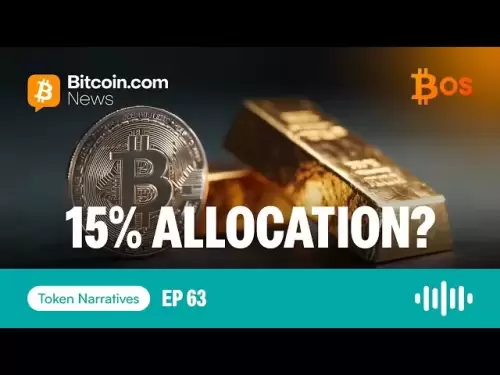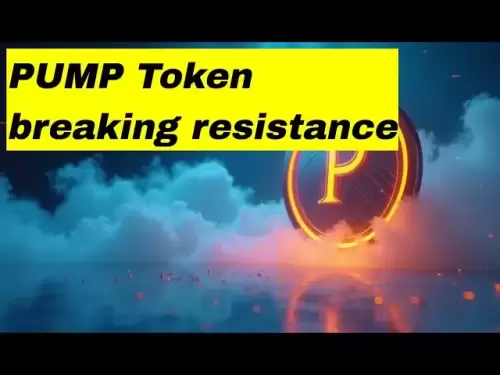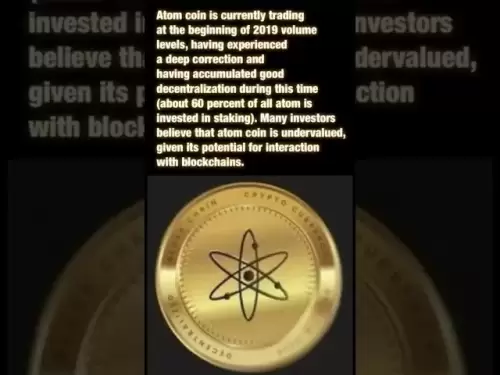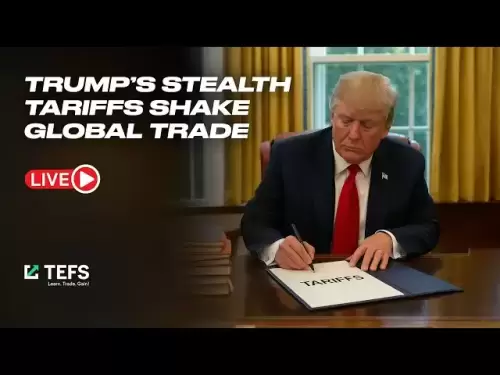-
 Bitcoin
Bitcoin $115200
-2.68% -
 Ethereum
Ethereum $3601
-5.16% -
 XRP
XRP $3.035
-2.96% -
 Tether USDt
Tether USDt $0.9997
-0.04% -
 BNB
BNB $764.5
-5.43% -
 Solana
Solana $168.1
-5.92% -
 USDC
USDC $0.9998
-0.02% -
 Dogecoin
Dogecoin $0.2090
-4.80% -
 TRON
TRON $0.3272
-0.49% -
 Cardano
Cardano $0.7306
-5.00% -
 Hyperliquid
Hyperliquid $39.16
-12.22% -
 Stellar
Stellar $0.3967
-4.96% -
 Sui
Sui $3.566
-5.95% -
 Chainlink
Chainlink $16.55
-6.57% -
 Bitcoin Cash
Bitcoin Cash $552.3
-3.90% -
 Hedera
Hedera $0.2516
-4.69% -
 Avalanche
Avalanche $21.99
-5.75% -
 Toncoin
Toncoin $3.621
-0.28% -
 Ethena USDe
Ethena USDe $1.000
-0.03% -
 UNUS SED LEO
UNUS SED LEO $8.951
0.02% -
 Litecoin
Litecoin $105.9
-3.59% -
 Shiba Inu
Shiba Inu $0.00001232
-5.00% -
 Polkadot
Polkadot $3.640
-5.55% -
 Uniswap
Uniswap $9.048
-7.03% -
 Monero
Monero $301.8
-1.51% -
 Dai
Dai $0.9999
-0.01% -
 Bitget Token
Bitget Token $4.334
-3.66% -
 Pepe
Pepe $0.00001064
-6.17% -
 Cronos
Cronos $0.1367
-5.78% -
 Aave
Aave $259.2
-4.59%
Efficient contract trading volume and price indicator analysis
Volume and price indicators are essential for understanding market dynamics in crypto contract trading, helping predict trends and inform decisions.
Jun 10, 2025 at 01:07 pm
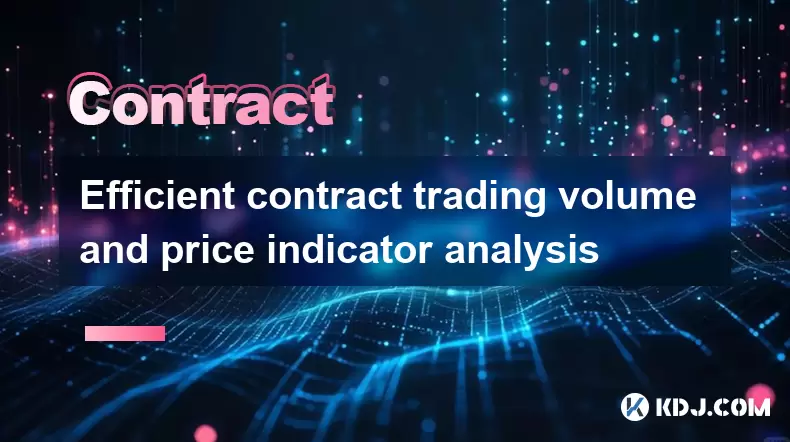
Efficient contract trading volume and price indicator analysis is a crucial aspect of understanding market dynamics in the cryptocurrency space. Volume and price indicators are key metrics that traders and analysts use to gauge market sentiment, predict future price movements, and make informed trading decisions. This article will delve into the specifics of these indicators, how they interact, and how they can be effectively used in the context of contract trading within the cryptocurrency market.
Understanding Trading Volume in Contract Trading
Trading volume refers to the number of contracts traded within a specific period. In the realm of cryptocurrency, this can mean the number of futures or options contracts exchanged on a given day. High trading volume often indicates strong interest in a particular cryptocurrency, suggesting that the asset is being actively traded. Conversely, low trading volume might signal a lack of interest or a period of consolidation.
When analyzing trading volume in the context of contract trading, it's important to look at the volume in relation to the price movements. For instance, if a cryptocurrency's price is rising and the trading volume is also increasing, this could be a sign of a strong bullish trend. On the other hand, if the price is increasing but the volume is declining, it might indicate that the upward movement is losing momentum and could soon reverse.
Key Price Indicators in Contract Trading
Price indicators are mathematical formulas that use historical price data to forecast future price movements. Some of the most commonly used price indicators in contract trading include the Moving Average (MA), Relative Strength Index (RSI), and Bollinger Bands.
Moving Average (MA): This indicator smooths out price data to create a single flowing line, which makes it easier to identify the direction of the trend. There are different types of MAs, such as the Simple Moving Average (SMA) and the Exponential Moving Average (EMA), each with its own method of calculation and use.
Relative Strength Index (RSI): The RSI is a momentum oscillator that measures the speed and change of price movements. It oscillates between zero and 100 and is typically used to identify overbought or oversold conditions in the market. An RSI above 70 might indicate that a cryptocurrency is overbought, while an RSI below 30 might suggest it is oversold.
Bollinger Bands: These are volatility bands placed above and below a moving average. They expand and contract based on the volatility of the price. When the bands tighten, it might indicate that a significant price movement is imminent.
Combining Volume and Price Indicators for Analysis
Combining trading volume with price indicators can provide a more comprehensive view of market dynamics. For example, if the price of a cryptocurrency is touching the upper Bollinger Band and the trading volume is high, this could be a strong indication of a continued upward trend. Similarly, if the RSI is showing overbought conditions and the trading volume starts to decline, it might suggest that a price correction is on the horizon.
To effectively combine these indicators, traders often use technical analysis platforms that allow them to overlay multiple indicators on a single chart. This visual representation can help traders spot patterns and correlations that might not be immediately obvious when looking at each indicator in isolation.
Practical Application of Volume and Price Indicators in Contract Trading
Applying these indicators in real-world trading scenarios involves a few key steps:
Select the Right Timeframe: Depending on your trading strategy, you might look at different timeframes. Day traders might focus on hourly or minute charts, while swing traders might prefer daily or weekly charts.
Set Up Your Chart: Use a trading platform that allows you to add multiple indicators to your chart. For example, you might add a 50-day SMA, an RSI, and Bollinger Bands to a daily chart of Bitcoin futures.
Analyze the Data: Look for patterns and signals. For instance, if the price of Bitcoin futures crosses above the 50-day SMA with high volume, this could be a buy signal. Conversely, if the RSI is above 70 and the volume starts to decline, it might be a sell signal.
Execute Trades Based on Signals: Once you've identified a potential trading opportunity, you can execute your trade. Remember to set stop-loss orders to manage risk.
Limitations and Considerations
While volume and price indicators can be powerful tools, they are not foolproof. False signals can occur, and market conditions can change rapidly. It's important to use these indicators as part of a broader trading strategy that includes fundamental analysis, risk management, and an understanding of market sentiment.
Additionally, the effectiveness of these indicators can vary depending on the specific cryptocurrency and the time of day. For instance, Bitcoin and Ethereum tend to have higher liquidity and more reliable indicators than smaller altcoins. Similarly, trading volumes can be higher during certain times of the day, such as during the overlap of major trading sessions.
Volume and Price Indicators in Different Market Conditions
The utility of volume and price indicators can also vary depending on the overall market condition. In a bull market, high volume and bullish price indicators can reinforce each other, signaling strong buying interest. In a bear market, declining volume alongside bearish price indicators can indicate a lack of buying interest and potential further declines.
In a sideways market, volume and price indicators can help identify potential breakouts. For instance, if the price is consolidating within a narrow range and the volume starts to increase, it might suggest that a breakout is imminent. Traders can use this information to position themselves for a potential move in either direction.
Frequently Asked Questions
Q: Can volume and price indicators be used for all types of cryptocurrencies?
A: While volume and price indicators can be applied to all cryptocurrencies, their effectiveness can vary. Major cryptocurrencies like Bitcoin and Ethereum tend to have higher liquidity and more reliable indicators. Smaller altcoins might have lower trading volumes and more volatile price movements, which can make these indicators less reliable.
Q: How often should I check these indicators?
A: The frequency of checking volume and price indicators depends on your trading strategy. Day traders might need to check these indicators multiple times a day, while swing traders might check them once a day or even less frequently. It's important to find a balance that suits your trading style and time availability.
Q: Are there any tools or platforms that are particularly good for analyzing volume and price indicators?
A: Several platforms are well-suited for analyzing volume and price indicators. TradingView is popular among traders for its comprehensive charting capabilities and the ability to add multiple indicators to a single chart. MetaTrader 4 and 5 are also widely used, especially for forex and futures trading, and offer robust tools for technical analysis.
Q: Can these indicators be used in conjunction with other forms of analysis?
A: Yes, volume and price indicators are most effective when used in conjunction with other forms of analysis. Fundamental analysis, which looks at the underlying value of a cryptocurrency, can provide context for the signals generated by technical indicators. Additionally, sentiment analysis, which gauges the overall mood of the market, can help confirm or refute the signals provided by volume and price indicators.
Disclaimer:info@kdj.com
The information provided is not trading advice. kdj.com does not assume any responsibility for any investments made based on the information provided in this article. Cryptocurrencies are highly volatile and it is highly recommended that you invest with caution after thorough research!
If you believe that the content used on this website infringes your copyright, please contact us immediately (info@kdj.com) and we will delete it promptly.
- FTX Token's Wild Ride: FTT Drop Amidst Creditor Repayment Buzz
- 2025-08-02 01:30:12
- Navigating the Crypto Market: Bitcoin, Trader Experience, and Avoiding the Noise
- 2025-08-02 00:50:12
- Deep Agents, AI Task Management, and Evolution AI: A New Era?
- 2025-08-02 00:50:12
- SPX6900, BlockDAG, and Miner Sales: A New York Minute on Crypto Trends
- 2025-08-01 23:30:15
- BlackRock, XRP ETF, and Ripple: Is the Perfect Storm Brewing?
- 2025-08-01 22:50:11
- Solana ETF Momentum Builds: Will SOL Join the Institutional Party?
- 2025-08-02 00:10:15
Related knowledge

Why is my Bitstamp futures position being liquidated?
Jul 23,2025 at 11:08am
Understanding Futures Liquidation on BitstampFutures trading on Bitstamp involves borrowing funds to open leveraged positions, which amplifies both po...

How to report Bitstamp futures for taxes?
Jul 30,2025 at 08:35am
Understanding Bitstamp Futures and Taxable EventsWhen trading Bitstamp futures, it’s essential to recognize that these financial instruments are treat...

Does Bitstamp offer inverse contracts?
Jul 23,2025 at 01:28pm
Understanding Inverse Contracts in Cryptocurrency TradingIn the realm of cryptocurrency derivatives, inverse contracts are a specific type of futures ...

What is the difference between futures and perpetuals on Bitstamp?
Jul 27,2025 at 05:08am
Understanding Futures Contracts on BitstampFutures contracts on Bitstamp are financial derivatives that allow traders to speculate on the future price...

How to find your Bitstamp futures trade history?
Jul 23,2025 at 08:07am
Understanding Bitstamp and Futures Trading AvailabilityAs of the current state of Bitstamp’s service offerings, it is critical to clarify that Bitstam...

Can I use a trailing stop on Bitstamp futures?
Jul 23,2025 at 01:42pm
Understanding Trailing Stops in Cryptocurrency TradingA trailing stop is a dynamic type of stop-loss order that adjusts automatically as the price of ...

Why is my Bitstamp futures position being liquidated?
Jul 23,2025 at 11:08am
Understanding Futures Liquidation on BitstampFutures trading on Bitstamp involves borrowing funds to open leveraged positions, which amplifies both po...

How to report Bitstamp futures for taxes?
Jul 30,2025 at 08:35am
Understanding Bitstamp Futures and Taxable EventsWhen trading Bitstamp futures, it’s essential to recognize that these financial instruments are treat...

Does Bitstamp offer inverse contracts?
Jul 23,2025 at 01:28pm
Understanding Inverse Contracts in Cryptocurrency TradingIn the realm of cryptocurrency derivatives, inverse contracts are a specific type of futures ...

What is the difference between futures and perpetuals on Bitstamp?
Jul 27,2025 at 05:08am
Understanding Futures Contracts on BitstampFutures contracts on Bitstamp are financial derivatives that allow traders to speculate on the future price...

How to find your Bitstamp futures trade history?
Jul 23,2025 at 08:07am
Understanding Bitstamp and Futures Trading AvailabilityAs of the current state of Bitstamp’s service offerings, it is critical to clarify that Bitstam...

Can I use a trailing stop on Bitstamp futures?
Jul 23,2025 at 01:42pm
Understanding Trailing Stops in Cryptocurrency TradingA trailing stop is a dynamic type of stop-loss order that adjusts automatically as the price of ...
See all articles





















